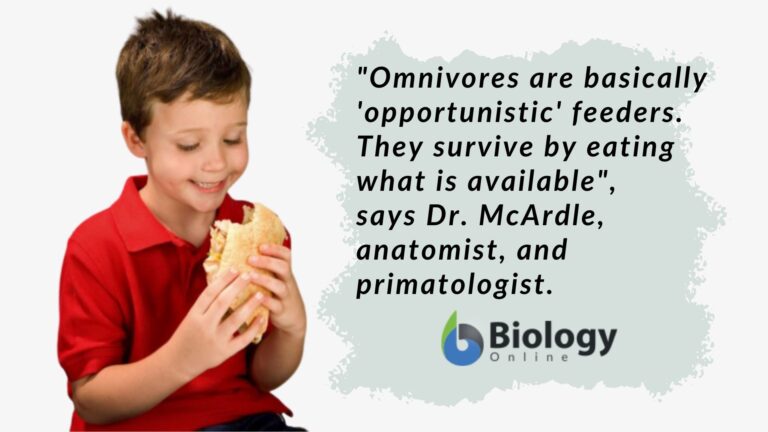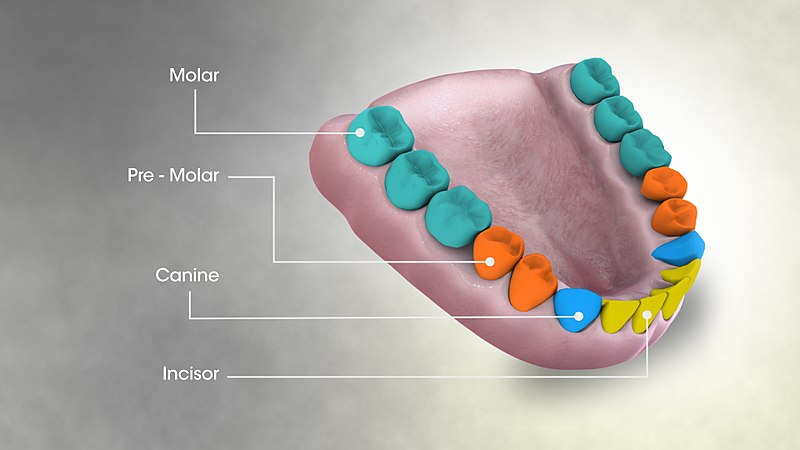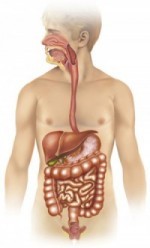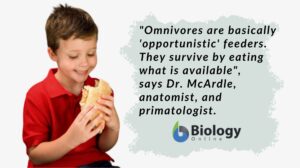
Humans are omnivores based on anatomical features and archeological records
Table of Contents
A number of popular myths about vegetarianism sprung with no scientific basis. One example of such a myth is that man is naturally a vegetarian. And the rationale is that the human body resembles plant-eaters and not carnivores. But as a matter of fact, humans are omnivores. We may eat meat or plant foods. Anatomist and primatologist and a vegetarian and a Scientific Advisor to The American Anti-Vivisection Society, Dr. McArdle, debunk the theory of man being only a plant-eater.
Taxonomy and Diet
McArdle says that much of the misinformation on the issue of humans being natural vegetarians arises from the confusion between taxonomic and dietary characteristics. Animals belonging to Order Carnivora are not exclusively meat-eaters. Some of them eat only meat, and therefore are carnivores. He says that dietary adaptations are not limited by a simple dichotomy between herbivores (strictly vegetarians) and carnivores (strictly meat-eaters). It is rather complex in including sub-groups, such as frugivores, whose diet is predominantly fruit, gramnivores, whose diet is predominantly nuts, seeds, etc., folivores, whose diet is predominantly leaves, insectivores that eat predominantly insects, etc. More so, the relation between the form (anatomy/physiology) and function (behavior) is not always one-is-to-one. “Individual anatomical structures can serve one or more functions and similar functions can be served by several forms”, he says.
Omnivores, Defined
Omnivores are defined as generalized feeders. They are neither carnivores nor herbivores. They have specializations adapted for acquiring, consuming, and processing food consisting of both animal protein and vegetation. McArdle further defines omnivores as essentially *opportunistic* feeders; they survive by eating what is available. They have more generalized anatomical and physiological traits. Human dentition (teeth) is one such trait. It indicates that the human diet is, by nature, omnivorous and not herbivore as the diet would include meat. Nevertheless, humans are not required to consume animal protein. It’s a matter of choice.
The Great Apes and Their Diet
Primates include multifarious species that differ in dietary preferences. Dr. McArdle cites that the only apes that are predominantly fruit-eaters, such as gibbons and siamangs, are atypical for apes in terms of behavioral and ecological respects. Similarly, orangutans have not been observed in the wild eating meat. Most gorillas are also vegetarian, with less emphasis on fruit.
A study was done to determine the correlation between body size and diet in primates (and some other mammal groups). The only primates on the list with pure diets were the very small species, which are entirely insectivorous, and the largest species, which specialize in a vegetarian diet. Apparently, “the spectrum of dietary preferences reflects the daily food intake needs of each body size and the relative availability of food resources in a tropical forest”.
The closest relatives of humans among the apes are the chimpanzees in terms of anatomical, behavioral, genetic, and evolutionary features. Chimpanzees frequently kill and eat other mammals and other primates.
Evidence that Humans are Omnivores
Archeological Records
The omnivorous diet of humans included meat based on archeological records. McArdle points out that human ancestors were among the hunter or gatherers from the beginning. And that when domestication of food sources began, it eventually included both animals and plants.
Anatomical Features
Based on anatomy, humans share anatomical features with those of omnivores (e.g. pigs, mice, rats, rodents, raccoons, etc.). The omnivores lack specialized storage and digestive sacs, such as fermenting vats. Vats are enlarged chambers where food could stay for microbes to “digest” it. Ruminants like cattle and deer have such vats as forward sacs whereas horses, rhinos, and colobine monkeys have posterior, hindgut sacs. Conversely, humans lack such specializations. Also, humans also have no sharp pointy teeth like those of the carnivores. Below are some of the specializations of humans that make them anatomically omnivores.
Jaws and teeth
The best evidence that humans are omnivores comes from the teeth. Humans have short canines that are a functional consequence of having an enlarged cranium and associated reduction of the size of the jaws. In other primates, the canines are comparatively longer than humans as they function as both defense weapons and visual threat devices. Interestingly though, both Gorillas and gelada baboons prefer vegetarian diets. Humans may have no need for long pointy canines as carnivores do for such use, particularly for capturing prey and threatening enemies. They do have canines that are pointy enough to serve the purpose of tearing meat. The molars and premolars, in turn, are used to crush food.

Intestines
If we are to compare the digestive systems of the carnivores, the herbivores, and the omnivores, we can say that the herbivores have the most complex type in terms of having multiple chambers. Compared to ours, they have additional digestive parts that enable regurgitation and digestion because their diet is plant-based, which is much harder to digest and needs more time to process. In contrast, the carnivores are rather simpler and less complex as meat is easier to digest. Omnivores are somewhat in the middle, meaning not as simple as the carnivores and not as complex as the herbivores. Humans could still digest plant material but those that are not digested (cellulosic material, for example) are excreted as waste.

Conclusion
Based on the above evidence, humans are naturally omnivores and are adapted to an omnivorous diet. A meat-free diet is, however, a conscious choice made essentially for ecological, ethical, and health concerns.
References
- Humans are Omnivores — The Vegetarian Resource Group. (2021). Vrg.org. https://www.vrg.org/nutshell/omni.htm
- Bradford, A. (2016, January 26). Omnivores: Facts About Flexible Eaters. Livescience.com; Live Science. https://www.livescience.com/53483-omnivores.html#:~:text=The%20food%20is%20softened%20in,that%20either%20carnivores%20or%20herbivores.
©BiologyOnline.com. Content provided and moderated by Biology Online Editors.

